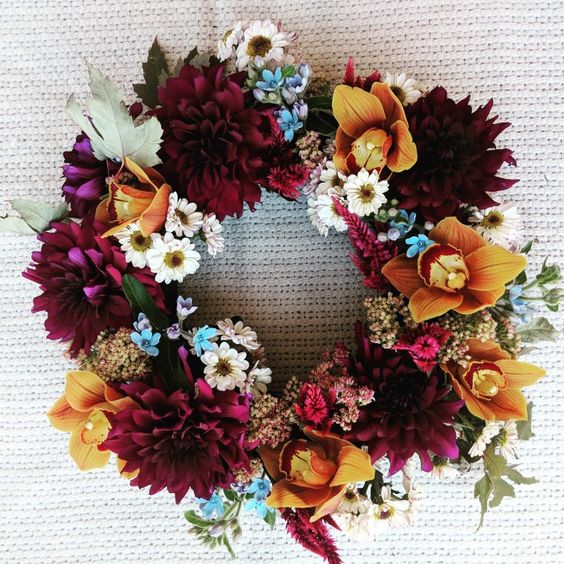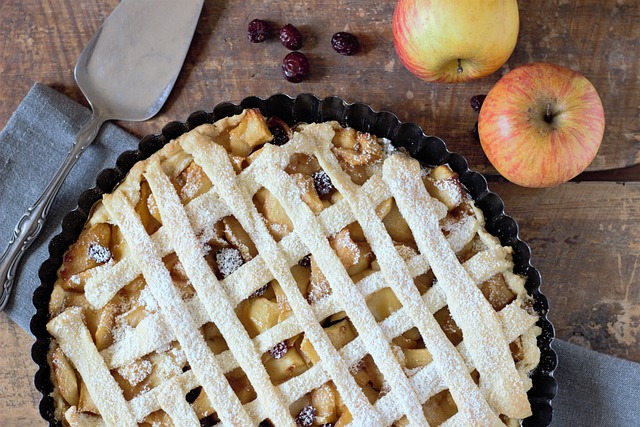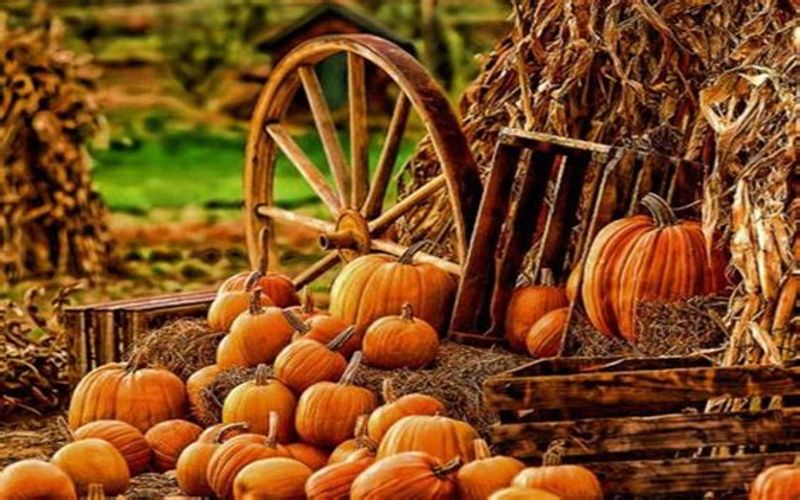The pagan festival of Mabon is a celebration of the second harvest and marks the fall equinox around September 21st to 22nd. Abundance and balance are two of this sabbat’s central tenets. At this time of year, the season hangs in perfect equilibrium: there are equal hours of day and darkness.
Mabon is a special time of year. The wind is changing and the Wheel of the Year is turning: winter is just around the corner. Celebrate the last of the harvest and savor the blessings of this sabbat before getting ready to curl up indoors when the cold weather blows in.
Mabon Goddesses

The Celtic goddess Modron is associated with fertility and maternity. She appears in a number of Welsh legends and is a feature in Arthurian myth, where she is the mother of Mabon, who gives his name to this sabbat. In the myths, Mabon is kidnapped, and Arthur embarks on a quest to rescue him. Modron supports Arthur’s attempts, symbolizing her link to themes of both family and justice. It’s suggested that Modron’s name derives from the Gallic term for “Great Mother” further pointing to her nurturing, protective nature.
Other goddesses associated with Mabon include Pomona, the Roman goddess of apples (and other fruits), the Greek goddess Demeter, and the Earth goddess Rhiannon, who some believe to be a different incarnation of Modron.
Mabon’s Position on the Wheel of the Year
Mabon follows the first harvest sabbat of Lughnasadh on the Wiccan Wheel of the Year. Lughnasadh (also known as Lammas) celebrates the abundance of the harvest and the sunlight and is a joyous festival that often involves the making and breaking of bread.
Directly after Mabon comes the sabbat of Samhain, held around November 1st. Samhain is one of the Greater Sabbats and, as such, has great significance for Wiccans and others who celebrate it. This festival is about honoring ancestors and loved ones who have passed on, with many believing that it’s the time of the year when the veil between this world and the next is the thinnest.
Mabon Rituals
If you’re planning on celebrating this sabbat for the first time this year, you may be wondering where to start. Use the ideas below to inspire your festivities, and make it a Mabon to remember.
Create a Mabon Wreath

This is a magical Mabon activity. As well as allowing you to reflect on the season and the turning Wheel as you create your wreath, you’ll end up with a gorgeous decoration for your home. Start by collecting natural materials such as fallen leaves and pinecones, acorns, dried flowers, wheatstalks, sprigs of berries, and miniature pumpkins. The concept of balance is central to this sabbat, so you could also add some items to your wreath that represent this. Clear quartz, amethyst, tiger’s eye, lapis lazuli, and calcite are a few examples of crystals that may help bring harmony, so make for a great addition to your wreath.
Using a wire wreath frame make a circle and secure your chosen items onto this base using floral wire, hot glue, or twine as appropriate. As you create your Mabon wreath, focus on your intentions for the season ahead. Think about that which you wish to release and the desires you’d like to manifest.
Refresh Your Home for Mabon
It’s not just spring that’s the perfect time to clean and refresh your home: some autumn cleaning can be just as rewarding! Once your home’s nice and clean, go around each room smudging the space using sage or sweetgrass. Say a few words of blessing as you go.
Now it’s time to decorate your home for the season! Arrange twigs and colorful leaves in bowls, baskets, and vases, hang your Mabon wreath, and create an altar dedicated to the goddesses associated with the sabbat, or the season itself. Add apples, pumpkins, gourds, gold, yellow, and red candles, acorns, and leaves, and anything else that feels right.
Share a Harvest Feast
Celebrating and offering gratitude for the abundance of the harvest is an essential element of Mabon. A lovely way to do this is to share a meal – or a harvest feast! – with loved ones. Create dishes from in-season, locally harvested foods, and make the most of nature’s bounty. Apples, pumpkins, bread, cheese, meat, honey, grapes, squash, corn, potatoes, cinnamon, rosemary, thyme, and sage are some of the delicious foods commonly associated with this sabbat. Serve with wine or grape juice, mead, ale, or cider for the perfect Mabon celebration. You’ll find an apple pie recipe below that’s doable for even the most reluctant of chefs.
Harvest Potpourri
Making harvest potpourri is a lovely activity. Here’s what you’ll need:
- Two cups of dried apples
- One cup of cinnamon sticks, broken into pieces
- Half a cup of dried orange peels
- One-quarter of a cup of whole cloves
- Two tablespoons of nutmeg
- Two tablespoons of dried rosemary
Blend all the ingredients above using a mortar and pestle. Alternatively, put them in a sealable bag and run a rolling pin over it a few times. And it’s as easy as that! Put your potpourri in bowls around your home, add a sprinkling to your Mabon altar, or tie small handfuls into pretty bags and tie them with a ribbon. These make perfect gifts for the season.
Mabon Activities for Children
There are near-endless ways you can celebrate Mabon with young children. Get out on a nature walk, collect fall leaves and make a beautiful collage with them, and have a go at pressing wildflowers. The latter can be hung in bunches around the home as part of your festive decorating.
Want some more ideas? How about making cinnamon salt dough leaves, having a go at crafting some little fabric pumpkins, making a batch of toffee apples or even creating DIY soap scented with cinnamon?
Mabon is also a great time to share abundance with others, so get your kids involved with some charity work. This could be as simple as filling a box with no longer used toys and other items to take to a charity store, or helping out at a food bank.
A Delicious Apple Pie Recipe for Mabon

Apples are a key symbol of this harvest sabbat, which is also known as the Witch’s Thanksgiving. It makes sense, then, to celebrate it with a sumptuous, nurturing apple pie! Here’s what you’ll need for this super-easy recipe:
- Six medium-sized apples, thinly sliced
- Double pie crust
- Three tablespoons of granulated sugar
- One egg white
- Few knob of butter
- One teaspoon of cinnamon
Preheat the oven to 450 degrees Fahrenheit. Mix together the apples, granulated sugar, and cinnamon in a bowl. Roll out an uncooked pie crust and place it on a deep, nine-inch pie plate. Next, place the apple mixture onto the pastry, and put small pieces of butter over the top. Top with the second pie crust and crimp the edges. Cut a few slits in the top of the pastry to allow steam to escape.
In a small bowl, mix the egg white with one tablespoon of water, brush this mixture over the top of the pastry, and then sprinkle with a little sugar. Bake at 450 for the first fifteen minutes and then for a further thirty to forty minutes at 350. Allow to cool for ten minutes before serving – and then enjoy with the rest of your Mabon feast!
Make Room for Mabon this Fall
The Mother goddess is getting ready to gently transform into the Crone, as the second and final harvest of the year arrives with Mabon. Before the cold nights set in, however, celebrate the final throes of the summer light and warmth. Gather together with family, feast with friends, and spend time giving thanks for the season’s abundance before your altar. Putting some food aside, by canning, potting, and freezing, for the winter is a traditional undertaking at this time of year. As you store away sustenance, think of how the sun’s energy will remain within this food, ready to nurture yo through the harder months ahead,
The Wheel of the Year is about to turn again – before it does, welcome Mabon, and make room for its essence within your life.
Featured Image Credit: thegypsythread.org

